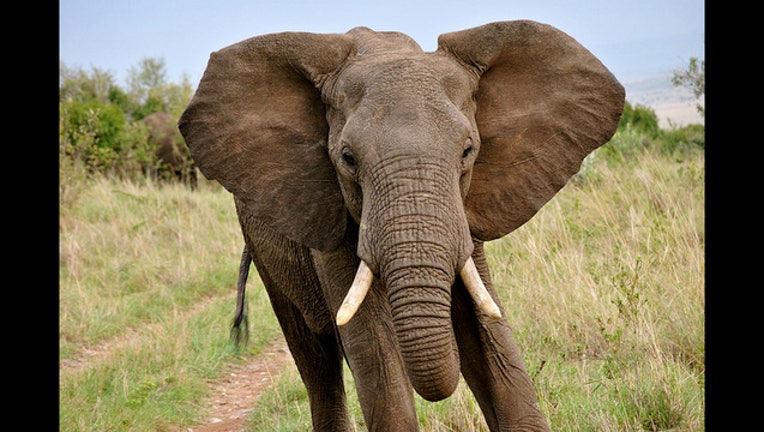Some elephants learning to avoid dangerous areas: Expert

Brittany H. / Flickr
NAIROBI, Kenya (AP) — Some African elephant herds are adapting to the danger of poaching by moving out of risky areas, according to one conservation group.
The plight of elephants is a key issue at the meeting of the Convention on International Trade in Endangered Species of Wild Fauna and Flora, or CITES, which began over the weekend and ends Oct. 5.
Radio tracking data of elephants since 1998 in northern Kenya show how "exquisitely sensitive to risk they are," said Frank Pope, operations manager of Save the Elephants.
Africa had 1.3 million elephants in the 1970s but has only 500,000 today, according to wildlife experts.
In northern Kenya's Shaba reserve, "you can almost pick out the borders of the reserve by where the elephants go," Pope said. "There is no fence, there is no cutting, there is nothing to visually mark it, but the elephants know, 'I am safe here, I'm not safe here.'"
Pope said "there is every reason to believe that elephants are voting with their feet and moving from unsafe areas to safe areas."
Save the Elephants also works in Virunga National Park in eastern Congo, which is home to multiple armed groups competing for control of the region's vast mineral resources. Some have been accused of killing elephants for their tusks. Elephants there stick closely to ranger's posts, Pope said.
The elephant populations worst hit by poaching are in Tanzania, Gabon, Cameroon, Central African Republic, Mozambique, Republic of Congo and Congo.
Kenya has said it will push for the total ban on the trade in ivory at the CITES meeting. It says the temporary lifting of the ban in 2007 to allow some countries to offload their stockpiles fueled the resurgence of killing elephants to sell their tusks, primarily to China and southeast Asian countries.

